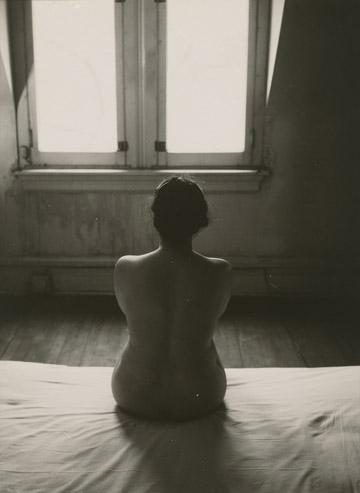100 Years of Quiet Wonder: Harry Callahan at the NGA
By • May 3, 2012 0 3846

This fall art season has brought a number of heavy-hitting exhibits to the Washington stage. Edgar Degas’ dancers arrived en masse to the Phillips Collection, the Corcoran Gallery’s 30 Americans exhibit has ignited racial and social discourse through the work of internationally acclaimed contemporary African American artists, and Andy Warhol has all but taken over the National Mall, with concurrent shows at both the National Gallery and the Hirshhorn. Looming on the near horizon are major exhibitions of Picasso, Annie Leibovitz and George Bellows.
But with all the sweeping, florid grandiosity of these major retrospectives, Harry Callahan at 100 stands out for just the opposite reasons, and in all the right ways. Tucked away in the basement floor of the National Gallery, the collection of work on view, commemorating the renowned photographer on the centenary of his birth, brings us perhaps the most intimate, utterly immersive show of the season.
Throughout his career, Callahan proved himself a discerning and incisive observer of the American subconscious, exploring a diverse range of visual ideas and concerns. He was also a fine teacher, as head of the photography department at the Institute of Design in Chicago and then a professor at the Rhode Island School of Design. A college dropout with no early artistic ambitions and almost no formal training, he grew up “not being able to do anything that I felt good about,” until he picked up photography as a hobby. Five years later, he was a professional photographer.
Callahan’s first major influence as a photographer, and someone who had a profound effect on his career, was Ansel Adams, who he met through a photography club while living in Detroit in his 20s. Later in life, Callahan said of Adams:
“There was something about what he did that hit me just right… He had pictures which were what I felt was photography… And I don’t think they were the great pictures, or the ones that were considered great of his, that really made me excited. It was the close-up pictures, near the ground, which I felt from then on I could photograph anything. I didn’t have to go to Yellowstone or the Grand Canyon, I could photograph a footprint in the sand and it would be like a sand dune. And I think this was probably the most freeing thing that could have ever been for me.”
The grandeur of the ordinary and the limitless scale of the intrapersonal are ongoing themes in Callahan’s work. And while he was also well known for his bold and constant visual experimentation (he was, among other things, one of the first fine art photographers to experiment with color), what stands out in this concisely curated show, which spans work throughout the course of Callahan’s entire career, is the status to which he raises our most basic surroundings and occurrences.
You will see trips to the beach. You will see trees throughout the season. You will see parked cars. You will see weeds and grass and junk. You will see buildings, storefronts and houses the same as you see when you look out your front door. And all of these images are engrained with a restlessness and fascination, as if the artist, having forced himself to evaluate the world immediately around him, demands that we too consider our world and come to a quiet understanding.
However, the most powerful series of images are of Callahan’s wife Eleanor. A photographer’s portrait of a loved one is hardly uncommon. Alfred Stieglitz, a seminal founding figure in fine art photography, famously photographed his wife, Georgia O’Keefe, with brazen sexual charge. Photographer Edward Weston’s portraits of his wife Flora are stark, severe and contemporary. But Callahan’s portraits of Eleanor are love songs in thin, black frames, and that sincere vulnerability is what makes them so engrossing. They show woman as woman, lover, mother and daughter, and speak of a more encompassing relationship based in profound trust, love and respect. Whether wrapped in a coat outside a bleak apartment building or lying naked in their bed, Eleanor becomes a symbol of a husband’s perception of his wife’s beauty, strength and fragility. And Eleanor does her part, looking into the camera, saying everything and nothing with her gaze, like she is looking right into her husband’s eyes.
Callahan’s photographs work on a level that comfortably serves dual, perhaps opposing functions. On the one hand, you can evaluate the socially critical, the autobiographical, the theoretical, the experimental and the technical nature of his work and walk away with your brain tingling. At the same time, and with equal bearing, the photographs are plainly beautiful. They are nice to look at. Like a Rothko or a Rockwell, there is a peaceful and satisfying presence about the work that washes you over inexplicably. Anonymous building facades of endless brick; cold, leafless trees reaching their draconian fingers into the ever-cloudy skies; the pensive, lovely faces of women, their downcast eyes distracted by the very matter of life, wherever it may be.
Callahan’s images are beautiful because they are made up of that which we balance just outside of our daily attention. These are the ever-present backgrounds—emotionally and physically—of our own stories. It feels like Callahan just chose to tell them.
‘Harry Callahan at 100’ is on view at the National Gallery of Art through March 4, 2012. For more information visit NGA.gov.

